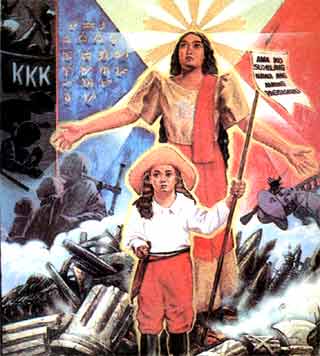by Francis A. Gealogo, PhD
Associate Professor sa Department of History, School of Social Scienes, Ateneo de Manila University
This is an excerpt from the article, “Time, Identity and Nation in the Aglipayan Novenario ng Balintawak and Calendariong Maanghang” by Francis A. Gealogo, PhD of the Journal,Philippine Studies, vol 58 nos. 1 & 2 (2010): 147-168, Ateneo de Manila University, Loyola Heights, Quezon City, 1108 Philippines.
Ang Virgen sa Balintawak ay ang Inang Bayan, or more popularly referred to as the novenario ng Balintawak (Aglipay 1925), was one of the most popular and widely circulated and reproduced religious texts of the Iglesia Filipina Independiente. It was written in Spanish and translated to Tagalog and English.
The novenario contained prayers and readings to be said in parts for nine days, culminating on 26 August of the year, commemorating the Cry of Balintawak that signified the official start of the Philippine Revolution. Although specially written to commemorate the church’s connection with the Philippine revolution, it was also recited on almost all occasions celebrated in the church, including the novena before Christmas and All Saints’ Day, for the feast days of patron saints of various parishes, and was a regular feature of household novenas recited in the private homes of its adherents done almost throughout the year. In the preface to the novenario, Aglipay mentioned that the vision of the Virgen sa Balintawak came when Andres Bonifacio and Emilio Jacinto were sleeping in the house of Tandang Sora in Balintawak and one of them “saw in a dream a beautiful Mother dressed in the style of the farmers of Balintawak leading a pretty child by the hand, dressed like a farmer with short red pants and holding a shiny bolo shouting ‘Kalayaan! Kalayaan!’” 2 Aglipay (1926, i) mentioned thatthe Mother of Balintawak reminds you constantly of your sacred and inescapable duty to make every effort possible to obtain our longed-for Independence; and she is the sacred image of our country.



